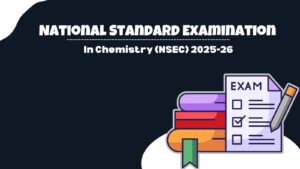For countless engineering aspirants all over India, the journey of cracking JEE Advanced serves as their ultimate goal and for many, a gateway to Indian Institutes of Technology (IIT).Each year, lakhs of students from across India attempt this exam and only a small percentage manage to get on the final merit list. If you are preparing for JEE Advanced 2025 (General Category), then this blog will discuss JEE Advanced minimum marks, expected cutoffs, category-based cutoffs, and tips to prepare.
Why JEE Advanced is Critical for IIT Admissions
JEE Advanced is conducted once JEE Main is complete. JEE Advanced serves as the only route towards IITs whereas JEE Main only benchmarks eligibility. The IITs rotate JEE Advanced and it examines analytical, conceptual, and quick thinking/reasoning ability. In order to get your dream course in your selected IIT, you will need to score higher than the minimum cutoff in order to qualify and attempt to be in the race for your course.
What Do “Minimum Marks” Mean?
In JEE Advanced, there are two types of minimum marks:
- Qualifying Cut-Off – The minimum marks required to make it into the rank list.
- Admission Cut-Off – These are the opening and closing ranks for several IITs and courses.
For General category candidates, it’s important to cross both cutoffs. However, in practice, qualifying is important, but being qualified simply isn’t good enough. The admission cut-off can be far higher than qualifying.
Minimum Marks in JEE Advanced 2024 for Qualifying Marks
The JEE Advanced qualifying marks have weight solely because they are the first step in determining whether a candidate qualifies for the Common Rank List (CRL). These qualifying cutoffs vary from year to year because of multiple reasons; the hardest of that factors are difficulty of paper, the number of candidates and number of available seats.
For JEE Advanced 2024, the qualifying marks were published after the examination was conducted, which occured on May 26th, 2024 by IIT Madras, on the site jeeadv.ac.in. The results for JEE Advanced were announced on June 9th, 2024, so only a little over 2 weeks after taking the examination.
It’s important to differentiate between:
- Qualifying Cutoff – The minimum marks required to be considered for the ranking.
- Admission Cutoff – The “rank” or “marks” needed to get a seat in a specific IIT and course.
| Rank List | Minimum % of Marks in Each Subject | Minimum % of Aggregate Marks |
| Common Rank List (CRL) | 10.0% | 35.0% |
| GEN-EWS Rank List | 9.0% | 31.5% |
| OBC-NCL Rank List | 9.0% | 31.5% |
| SC Rank List | 5.0% | 17.5% |
| ST Rank List | 5.0% | 17.5% |
| Common-PwD Rank List (CRL-PwD) | 5.0% | 17.5% |
| GEN-EWS-PwD Rank List | 5.0% | 17.5% |
| OBC-NCL-PwD Rank List | 5.0% | 17.5% |
| SC-PwD Rank List | 5.0% | 17.5% |
| ST-PwD Rank List | 5.0% | 17.5% |
| Preparatory Course Rank Lists | 2.5% | 8.75% |
Category Based JEE Advanced Cutoff 2023
Category Based JEE Advanced Cutoff 2023 : Here is the table summarizing the JEE Advanced Cut-off 2023 based on categories:
| Category Based JEE Advanced Cutoff 2023 | |||
| Sr. No. | Category | Minimum Percentage of Aggregate Marks | Minimum Aggregate Marks |
| 1 | General | 16.39% | 59 |
| 2 | ST-PwD | 8.27% | 30 |
| 3 | Gen-EWS | 14.82% | 53 |
| 4 | Preparatory course (PC) | 3.26% | 12 |
| 5 | SC | 8.27% | 30 |
| 6 | ST | 8.27% | 30 |
| 7 | Gen-PwD | 8.27% | 30 |
| 8 | OBC-NCL-PwD | 8.27% | 30 |
| 9 | Gen-EWS-PwD | 8.27% | 30 |
| 10 | OBC-NCL | 14.82% | 53 |
| 11 | SC-PwD | 8.27% | 30 |
How Many Marks Are Needed in JEE Advanced to Get into an IIT?
I’m sure you want to get admission into Indian Institutes of Technology from one of the top engineering institutes in India. To get there, the prerequisite is to appear and clear JEE Advanced, and to clear it, you need to score well.
The total marks of JEE Advanced change from year to year, but as per the latest pattern JEE Advanced is conducted for a total of 372 marks.
Candidates for getting admission into IITs must satisfy the qualifying marks in JEE Advanced scores to be considered. The qualifying marks are determined after analyzing the students’ overall performance of candidates who appeared for that exam, meaning candidates must exceed the qualifying cutoff to increase the possibility of a better rank to get admission into their desired IIT.
It’s important to note that qualifying marks are subject to change. Qualifying marks for JEE Advanced depend on many factors that change each year namely, level of difficulty, number of applicants for the exam, performance of all candidates appearing the exam, etc. I highly recommend candidates to stay on top of official notifications and updates that can impact their preparation strategy.
Getting the appropriate marks in JEE Advanced is the first step for any candidate wishing to advance their educational journey in one of India’s premier IIT institutions.
Category-Wise Minimum Marks Required in JEE Advanced for IIT Admission
Minimum qualifying marks in JEE Advanced vary based on the category of candidate. Minimum qualifying marks are required marks that candidates need to be eligible to be considered for IIT admissions. Below is a breakdown of minimum marks based on categories.
1. Common Rank List (CRL):
- Minimum Marks for Each Subject: 6
- Minimum Aggregate Marks: 63
2. OBC-NCL Rank List:
- Minimum Marks for Each Subject: 5
- Minimum Aggregate Marks: 56
3. GEN-EWS Rank List:
- Minimum Marks for Each Subject: 5
- Minimum Aggregate Marks: 56
4. SC Rank List:
- Minimum Marks for Each Subject: 3
- Minimum Aggregate Marks: 31
5. ST Rank List:
- Minimum Marks for Each Subject: 3
- Minimum Aggregate Marks: 31
6. Common-PwD Rank List:
- Minimum Marks for Each Subject: 3
- Minimum Aggregate Marks: 31
7. OBC-NCL-PwD Rank List:
- Minimum Marks for Each Subject: 3
- Minimum Aggregate Marks: 31
8. GEN-EWS-PwD Rank List:
- Minimum Marks for Each Subject: 3
- Minimum Aggregate Marks: 31
9. SC-PwD Rank List:
- Minimum Marks for Each Subject: 3
- Minimum Aggregate Marks: 31
10. ST-PwD Rank List:
- Minimum Marks for Each Subject: 3
- Minimum Aggregate Marks: 31
11. Preparatory Course:
- Minimum Marks for Each Subject: 0
- Minimum Aggregate Marks: 9
These minimum scores serve as qualifying marks and come with variations of increase or decrease based on fair treatment of candidates according to various categories. It is important for candidates to know these criteria to measure their performances and assess the possibility of passing JEE Advanced.
About Origin Educare
Origin Educare is a trusted educational platform which helps students in India with the most updated exam information, exam preparation tips and techniques and expert advice. We want to catalyze the preparation of competitive examinations such as JEE Advanced in order to transform these examinations into highly accessible events not filled with fear, anxiety, and uncertainty. Origin Educare provides updated resources to support candidates and mentoring from highly qualified coaches and mentors. If you are serious about securing your place in IIT. Please stay connected with Origin Educare throughout the process for coverage on every aspect of your journey to IIT.
Conclusion
Successfully cracking JEE Advanced 2025 and securing yourself a spot in IIT is a challenging responsibility for engineering aspirants, but even more difficult for candidates to achieve in the highly competitive General category. Candidates should be very informed about the minimum marks and cutoffs both qualifying cutoffs and admission cutoffs to set and successfully achieve the targets set in preparation. The minimum marks and cutoffs indicate if you will get a place on the rank list, but interpretation of your minimum score is much more than this. Your minimum score and qualifying marks declared during the JEE Advanced is not an optimum total score for your admission in any field in an IIT of your preference. Your final goals should set yourself well above these minimum scores. Getting the minimum score only gives you the chance to get to the preference points, if you have even minimum marks because deciding based on admission criteria is always a level above your minimum.
Remember that cutoffs can vary (upwards or downwards) each year based on difficulty levels of the exam, competition levels in the current academic year, and number of seats made available for the academic year or immediacy to that date, so the need to stay updated with official announcements is really important.





